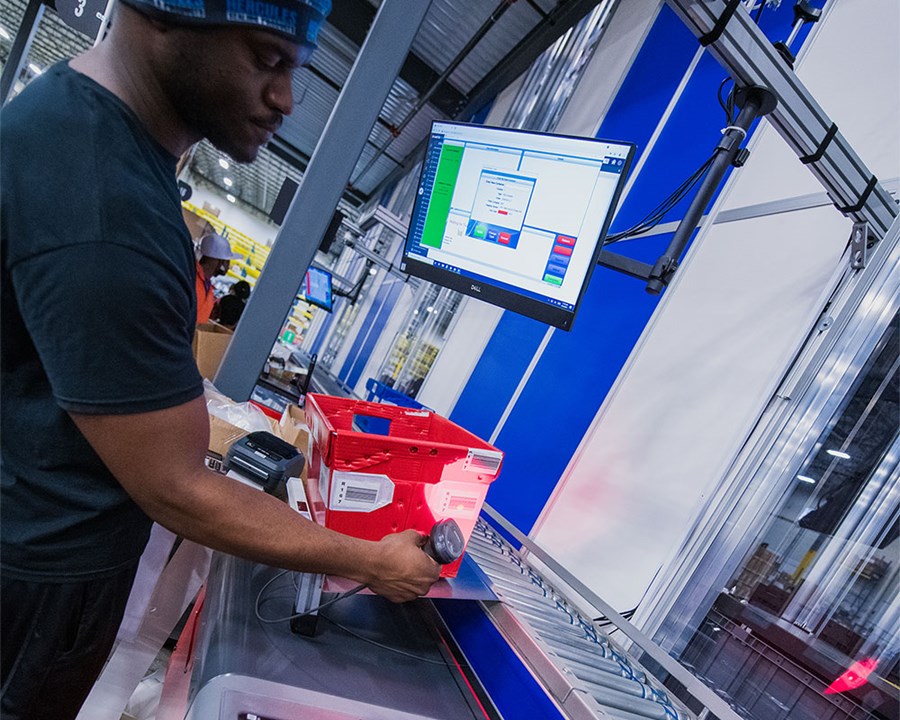
Achieving Success with Goods to Person Starts with Software
Chris Bratten | 17 March 2022
Mobile shelving, AMRs, cranes, shuttles – GTP (goods to person) technologies are constantly evolving to make workspaces more ergonomic, safer, and warehouse operations more efficient and adaptable. These various options, from new and disruptive providers or established market leaders, allows integrators to find a solution that exactly fits their customers’ need.
With all this innovation and growth in the goods to person warehouse automation sector, it’s vital to factor the impact on the whole system’s integration, tied together through software and controls. To compensate, WES systems are getting larger and more complex in order to integrate with new technologies provided by other vendors coming to market.
The tight integration between software and technology makes an impact on the extensibility – ability to allow new capabilities and functionality – of your equipment and operations. This stretches your investment and brings even more benefit to your operations, and ultimately your customers.
To truly optimize a goods to person system, customers should consider each GTP technology’s merits, but also the software that will manage its operations.
Understanding the Warehouse Application
It’s critical to understand the strengths and weaknesses of the various goods to person solutions to know if it’s the best fit for the application compared to other technology. You don’t want to fall into the trap of getting the “next big thing” if it doesn’t have the right feature-set for your application.
Asking a few key questions about GTP technologies can help clarify the best use-case. Start with:
- How does the technology work most efficiently?
- How is it deployed?
- How is it integrated into existing automation solutions?
- How is it supported once deployed?
Think through how the new GTP system will fit with other automation solutions in your warehouse; will they interact and, if so, how? Understanding this will help you leverage the right GTP system, in the right way.
It can be tempting for integrators to deploy all GTP technologies the same way using common management configurations, but no system or operation is the same and it’s important to remember to leverage the flexibility of these technologies to create a uniquely optimal fit that supports your needs.
Designing the Solution: More than “Right-Sized”
Achieving extensibility means more than just selecting an automated solution that is sized correctly to handle the storage and throughput design requirements. It’s vital to also understand how the WES (warehouse execution system) integrates with the control software and system as a whole. When exploring technologies, ask:
- What features are included from the vendor?
- Are there gaps that need to be filled within the WES software?
- Does the solution have its own inventory management and user interface?
- Are there safety standards that need to be met – based on customer or integrator protocols?
- Is the integration built with long-term strategy in mind, to ensure repeatability and quality?
- What’s the install base of the technology? How proven is it?
Just like there is an increasing variety of GTP technologies, the degree of flexibility and connection between the WES and GTP software can also vary.
Some vendors may be open to deploying a solution without the management software and rely on the WES or WMS to manage that operation. Other vendors, however, may have an established management software and may prefer for that to remain unchanged, in which case the WES plays a different role requiring a more vertical integration. In yet other cases, the vendor’s solution may have unique limitations and knowing that in advance can help prepare the WES for a more horizontal integration.
Understanding the System Communication
The most important aspect of a successful GTP integration is how the WES manages the technology. A shuttle-based technology like ADAPTO or Servus, for example, operates differently than a cube-based system like AutoStore or OPEX Perfect Pick.
A system integrator will want to work out the details of how the WES and GTP technology communicate. How are work commands sent to the system? Does that workflow and connection need to be refined considering the type of GTP technology to be implemented?
Using the same communication configurations for different goods to person systems may seem like an efficient method, especially for warehouses that have multiple systems. However, even minor differences in operations or capabilities can create operational inefficiencies when managed the same way across the board.
Avoid Sub-Optimal Warehouse Solutions
Integrators have more options than ever when it comes to selecting automation equipment to build a solution for their customers. This variety is not only in hardware, but also in the strength of the software integration offering of the vendor’s product. It’s critical for integrators to understand the relative strengths and weaknesses of different vendor offerings and how to best integrate each of those options to build the best solution for the application – they’re not all the same.
A one-size-fits-all approach, in technology application and, especially, in the system integration will leave productivity gains on the table and deliver a sub-optimal solution.
Ready to talk about your warehouse automation needs? Our software and system experts are ready to work with you to find the right combination of solutions to optimize your operations.
Chris is a Logistics Consulting Manager at Bastian Solutions, based in Louisville, Kentucky. He has a Bachelor of Science in Mechanical Engineering from Rose-Hulman Institute of Technology and a MSME from Purdue University. Since starting with Bastian, Chris has developed and maintained strong relationships with his clients; designing solutions and supporting system integrations.
Comments
No comments have been posted to this Blog Post
Leave a Reply
Your email address will not be published.
Comment
Thank you for your comment.